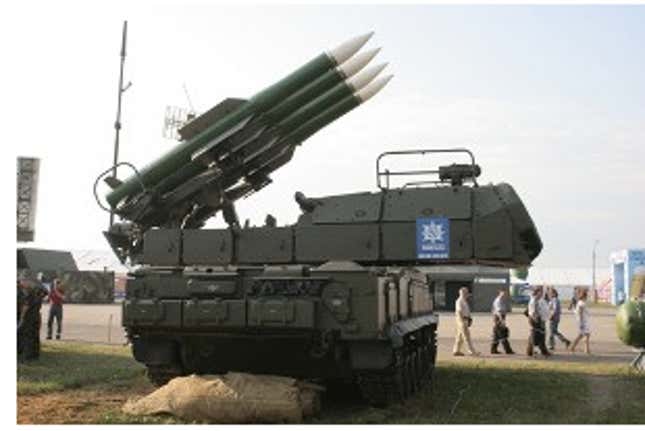
US and Ukrainian officials believe a “Buk” surface-to-air missile shot Malaysia Airlines flight 17 out of the sky in eastern Ukraine yesterday, killing all 298 people on board.
Truck-mounted Buk missile systems were originally designed in Russia in the 1970s. They are now made by Almaz-Antey, a Russian state company formed in 2002 (link in Russian) by a presidential decree that joined together 46 different research and production firms. The company’s slogan is “High technologies safeguarding peaceful skies.”
The Buk missiles—the name means “beech,” as in the tree—are one of Almaz-Antey’s “land-based defense products.“

The company also sells civilian products, including air traffic control equipment and radar. You can see how the missile system works in this promotional video from the company, which shows simulated weapons shooting at what appear to be simulated US targets. The Buk demonstration starts at about the 2:00 mark.
Pro-Russian militants were initially suspected in the Malaysia Airlines shooting, after Kiev released what it said were intercepted phone calls between rebel commanders confirming the attack. The rebels have denied any role in bringing down the flight.
Almaz-Antey was already on western governments’ watch list before the Malaysia Airlines plane went down. On July 16, the US Treasury added Almaz-Antey to a list of sanctioned Russian companies and individuals that US firms and citizens are prohibited from doing business with.
The general director of Almaz-Antey said the sanctions “will not exert a significant influence on Almaz-Antey completing its plans in full,” the Moscow Times reported.
China may become the first export customer for Almaz-Antey’s new long range surface-to-air missile known as the “Triumf” or the “Growler,” IHS Jane’s reported in March. China is expected to spend several hundred million dollars for the missile systems, which are capable of reaching Taiwan from mainland China.